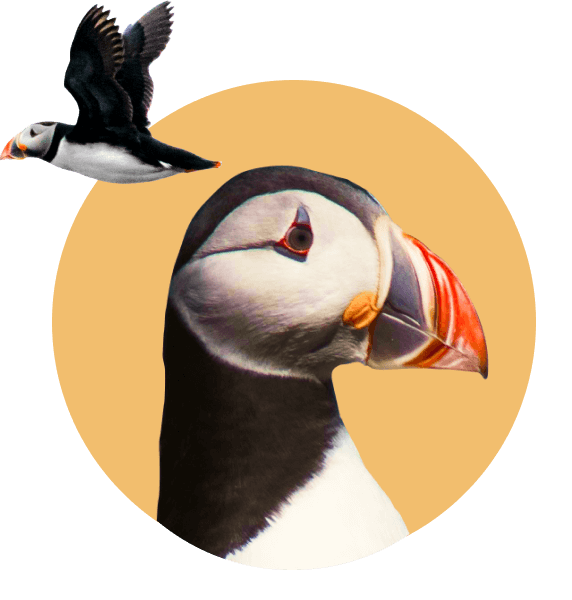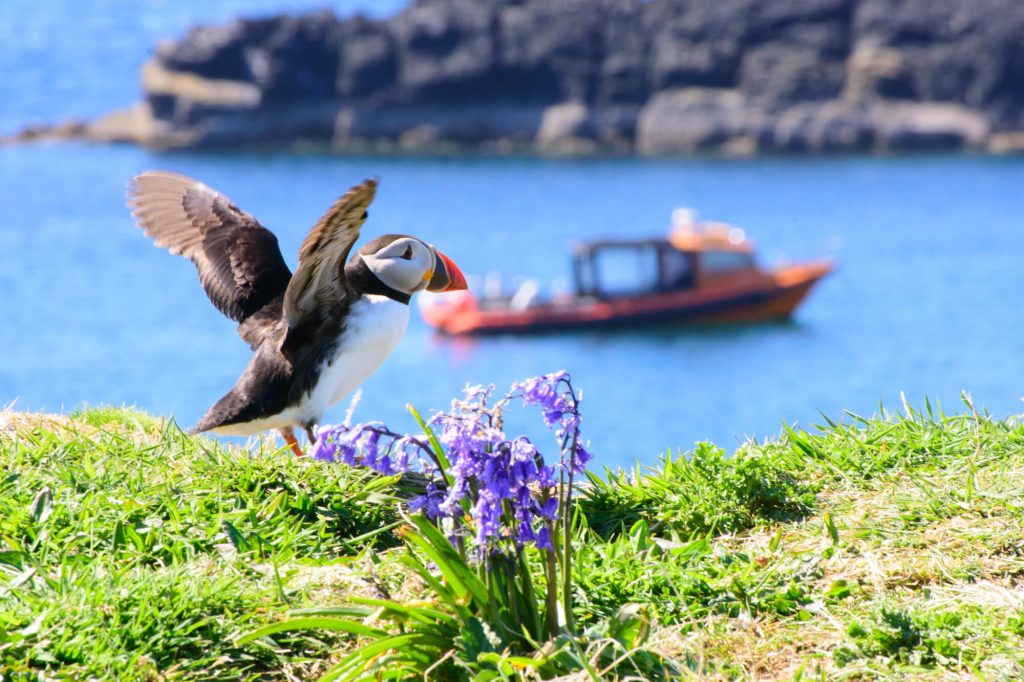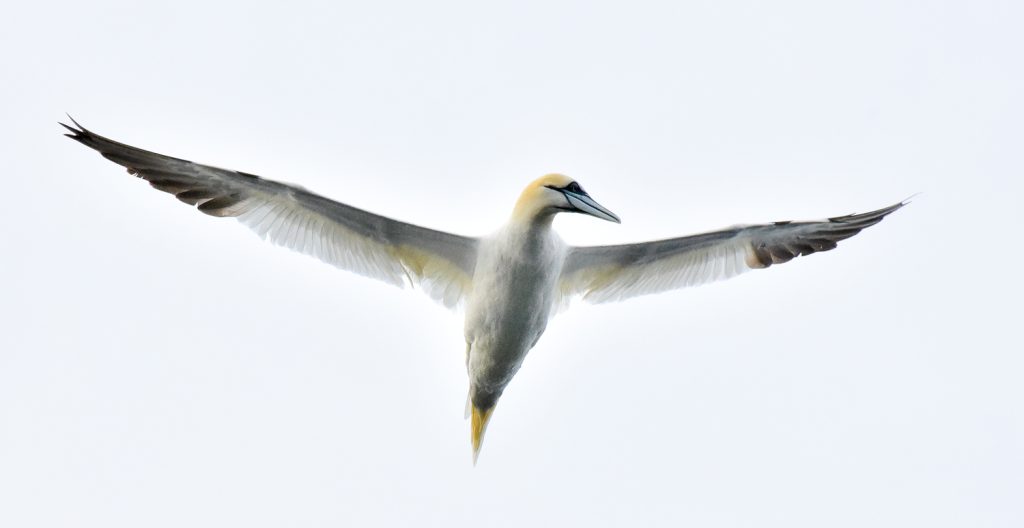
What seabirds do we see during our trips around the Hebrides?
Jan 03 2024

Although we talk a lot about basking sharks and marine life, seabird watching does take up a big part of our trips. They give us a good indicator of where feeding is happening which can help us to find whales, dolphins and sharks from a distance. However they all have their own impressive features and behaviours.
Here’s a few of our favourites;
-
White Tailed Sea Eagle
Not strictly a ‘seabird’ but they do forage from the sea along with a varied terrestrial diet. The biggest raptor in Europe with wing span over 2m. They were re-introduced in the 1970’s and has been a real conservation success story after they died out from persecution in the early 20th century. We see a lot round Oban & Mull and what we hope was a successful fledgling on Coll last year. Always a popular species to watch and an added ‘wow’ factor when you see them fly over the boat, confirming their nickname of the flying barn door.
-
Puffin
We couldn’t have this list without the firm favourite – the puffin. The jewel of the Treshnish Isles is a fantastic place to visit and see some of the 3000 individuals that call them home. We really enjoy the spring when all the flowers make a wonderful photo backdrop to their colourful beaks. Late season as the pufflings (baby puffins) are fledging and they are about to leave is also great to experience the crescendo of their time on land. They are quite nervous when out at sea, so our landing trips are the best way to get a close view of them.
-
Manx Shearwater
A common sight for us during trips, they have a very graceful flight and form rafts in the tens of thousands. When we have calm weather and big feeding events, the clouds of birds are just as impressive as the big megafauna. Their main nesting area is on the Isle of Rum which lies to the north of our operational area. Their numbers are in the hundreds of thousands and form a signification proportion of the world population. Their migration is another incredible feat of nature as they head to South America for winter. Their eerie call at night even scared the vikings into believing that trolls inhabited the hills where they were nesting!
-
Gannet
Our nearest colonies are Ailsa Craig & St Kilda, but we see them as close in as Oban. These are the largest seabirds in Europe and dive bomb from the sky to catch fish, hitting the water at up to speeds of 60mph/100kmh. Seeing a large number of these birds simultaneously diving in the water during feeding is very impressive. They have taken a bit of a hit with avian flu, and it’s sad to have seen the birds struggling the last few summers. Hopefully they are now over the worst and can recover back to their previous numbers.
-
Storm Petrel
An elegant bird we usually see when offshore searching for basking sharks, whales & dolphins. They are the smallest of all the petrels and the Treshnish Isles holds approx 20% of the British population.Another migrator like the manx shearwaters heading to the southern hemisphere for winter. Weighing only an average 25-30g, they are fantastic to watch in very calm weather as they dance across the water foraging. However equally as impressive as they cruise through the waves during high seas.
-
Skua
Not always the most popular of birds, known as a pirate of the skies, but predators gotta eat too, right!? We have a few species of skua, the most common is know as the bonxie (great skua) but we often see arctic skuas too. When chasing birds for their catch there can be impressive aerial dogfights to watch. However it can be hard to see them take young guillemot chicks or puffins. Take care during our outer isles trips when landing on some of the islands as they have little fear of humans and will buzz you very close.
-
Arctic Tern
Their screeching call is one of the sounds of summer during our tours, the coastline almost seems quiet once they leave in the late summer/early autumn. The coolest fact about these birds is that they see more daylight than any other animal on earth. Spending their summers with us before heading to the Antarctic area for their summer. Over their lifetime they travel the equivalent of heading to the moon and back three times. Another lightweight species weighing around 100g, they do pack a punch as any predatory bird wandering near their nesting site will get mobbed and dived bombed. A wee pocket rocket as some would say.







